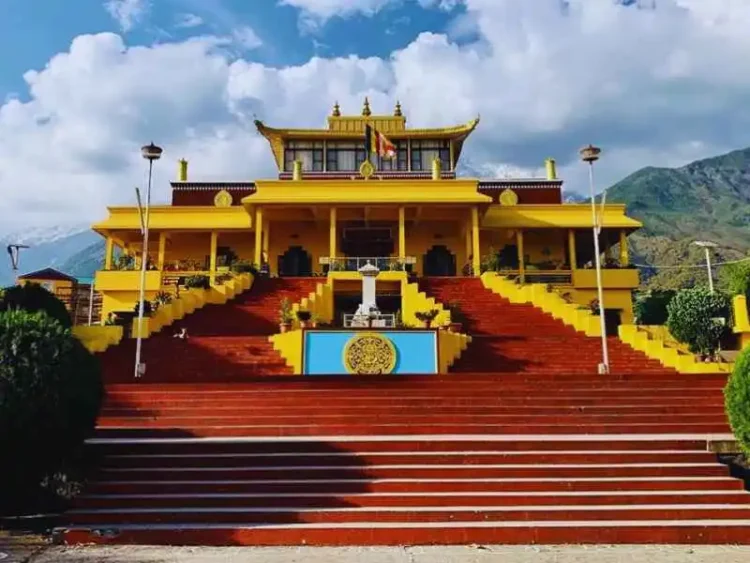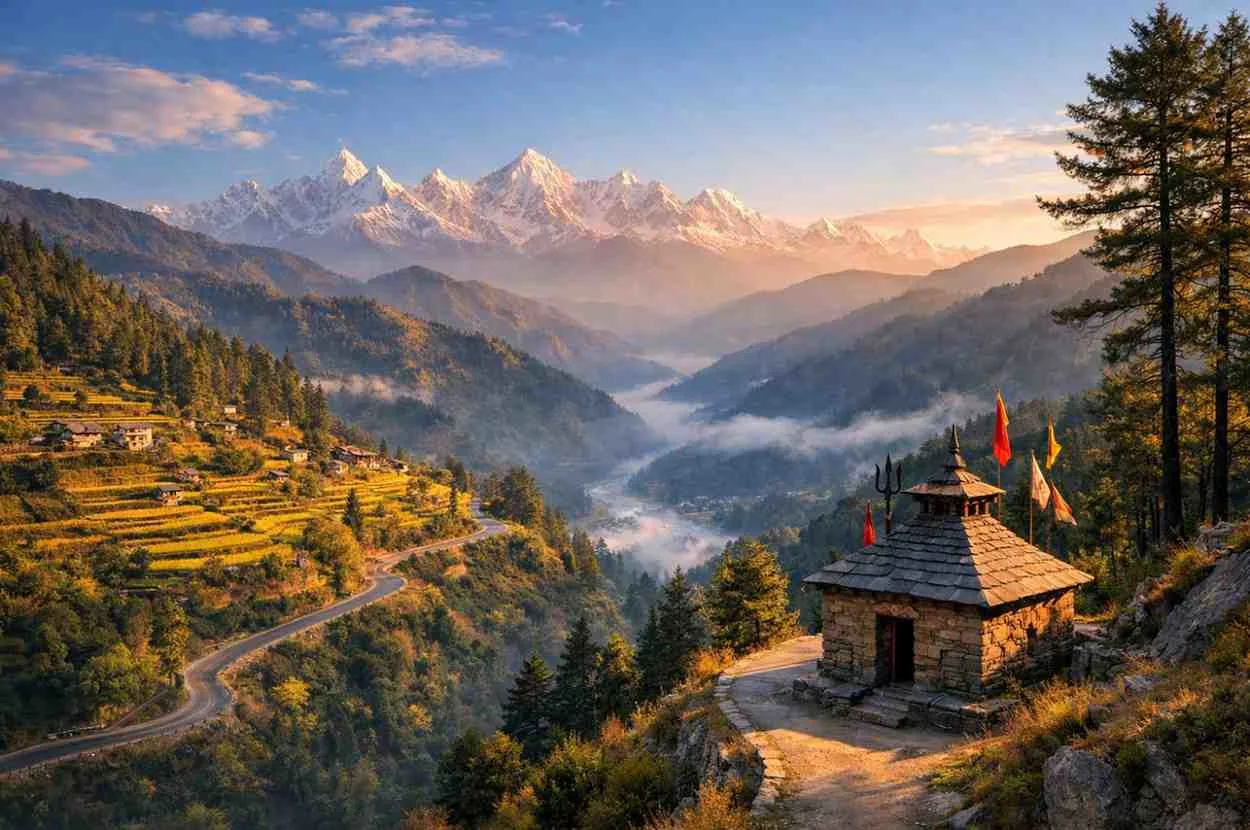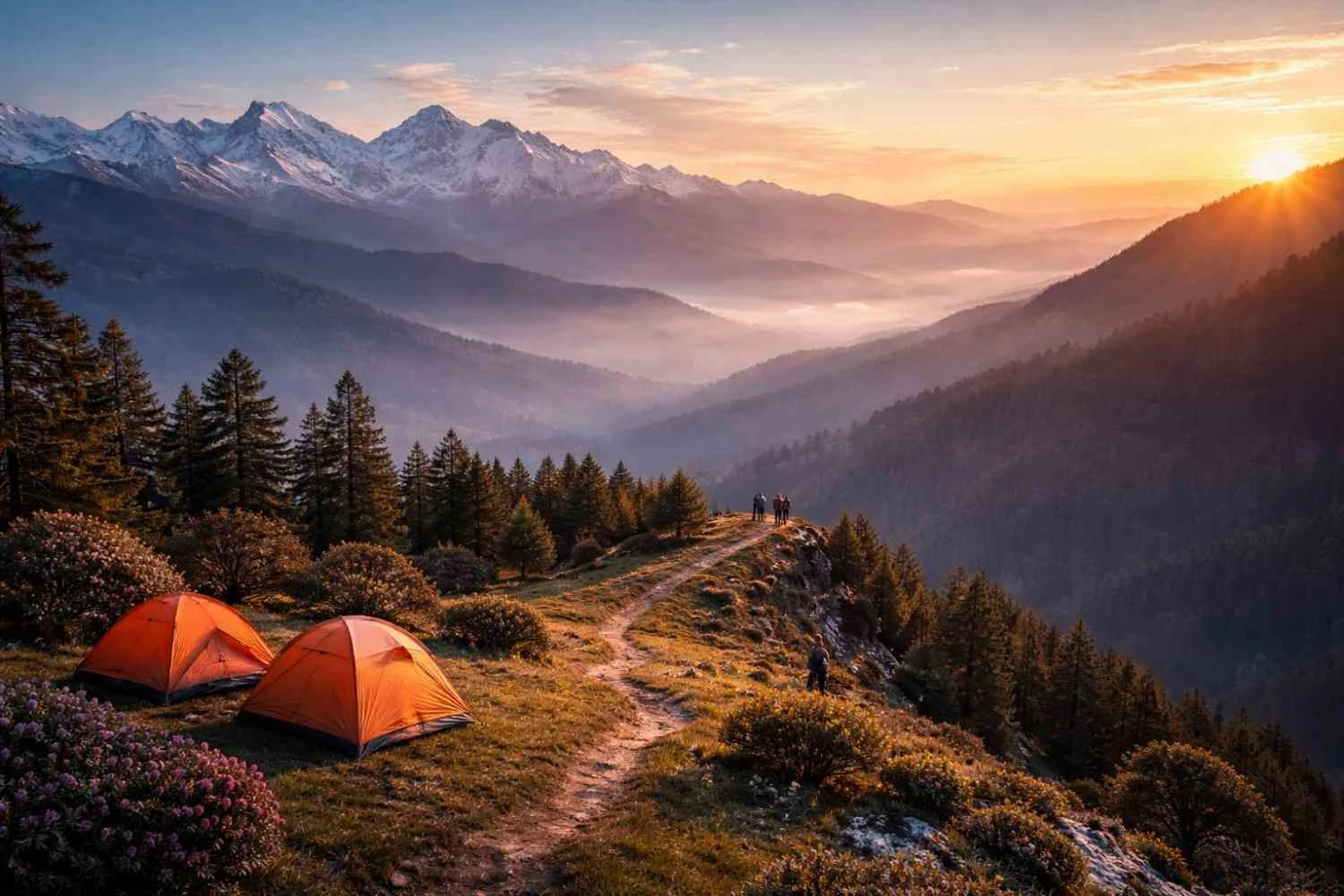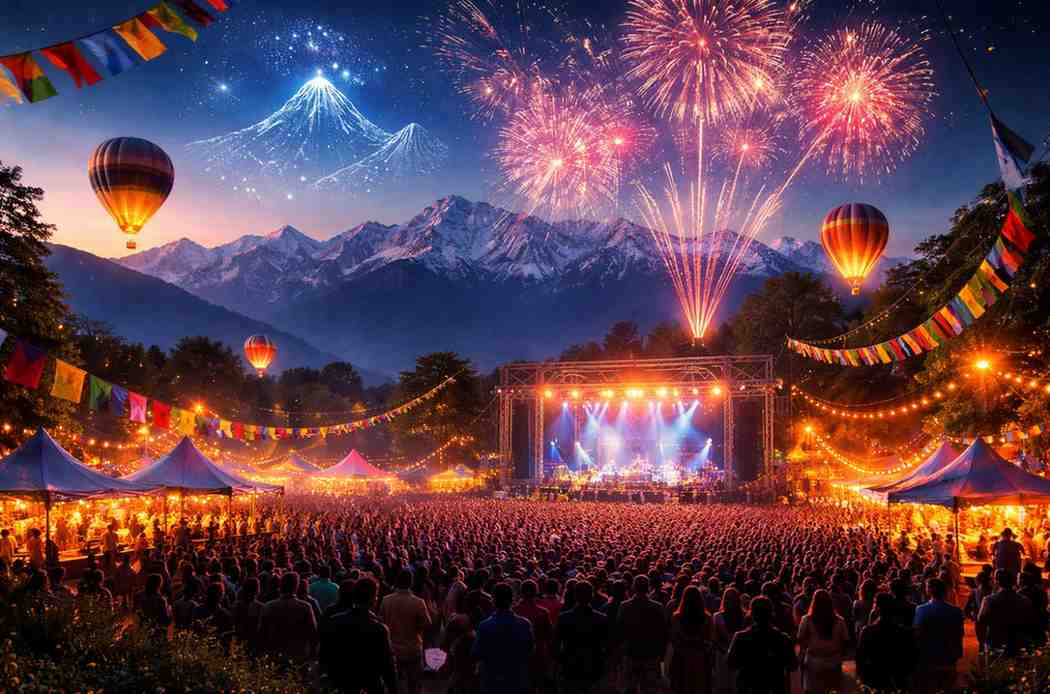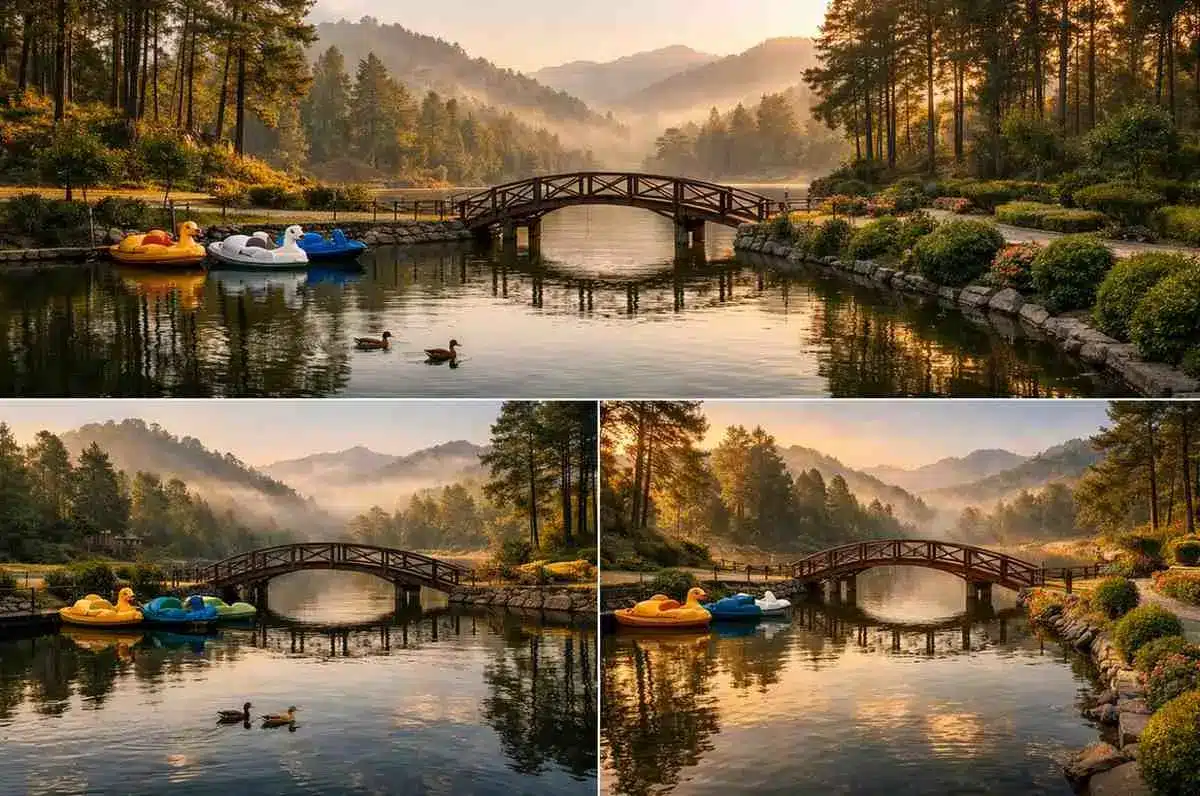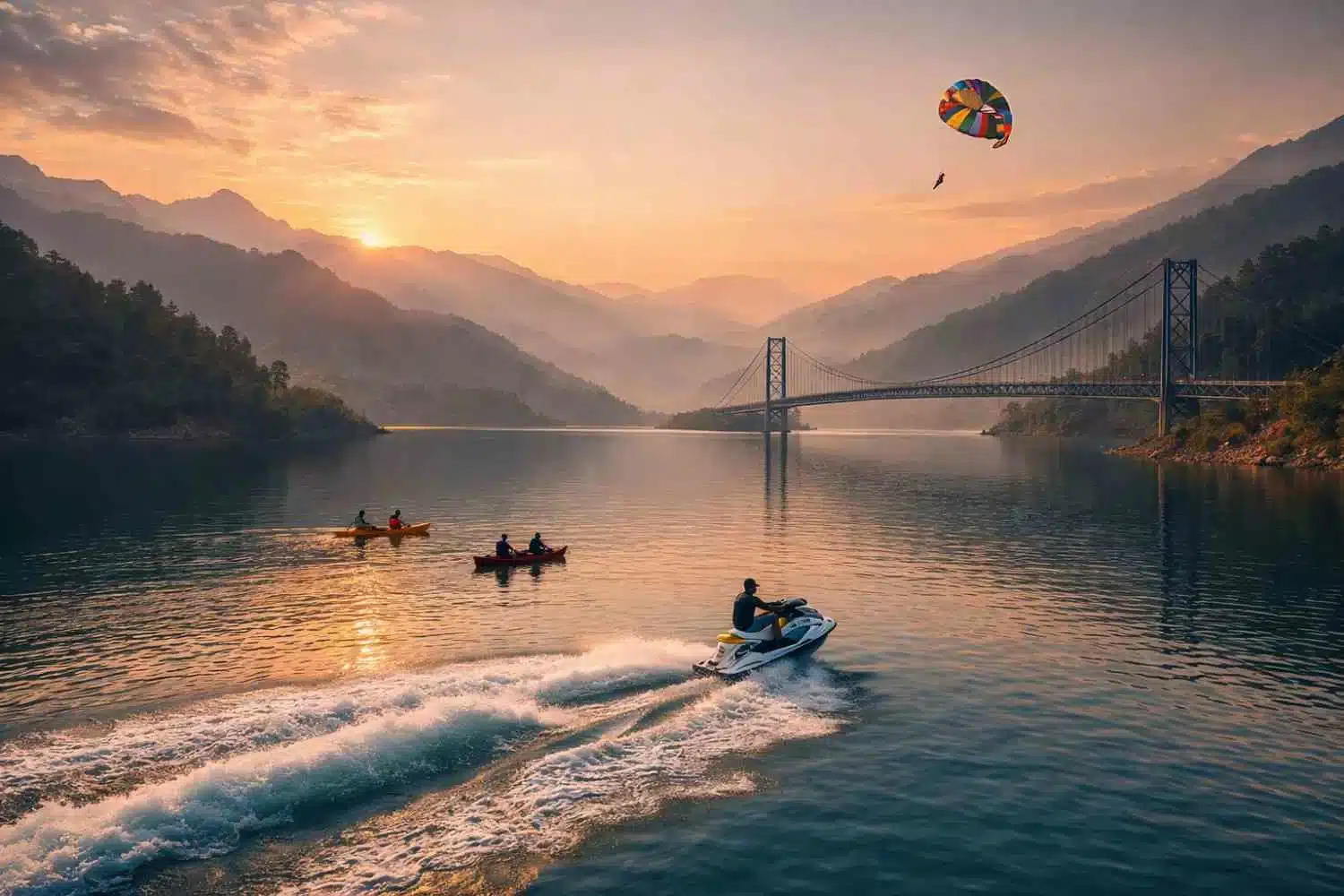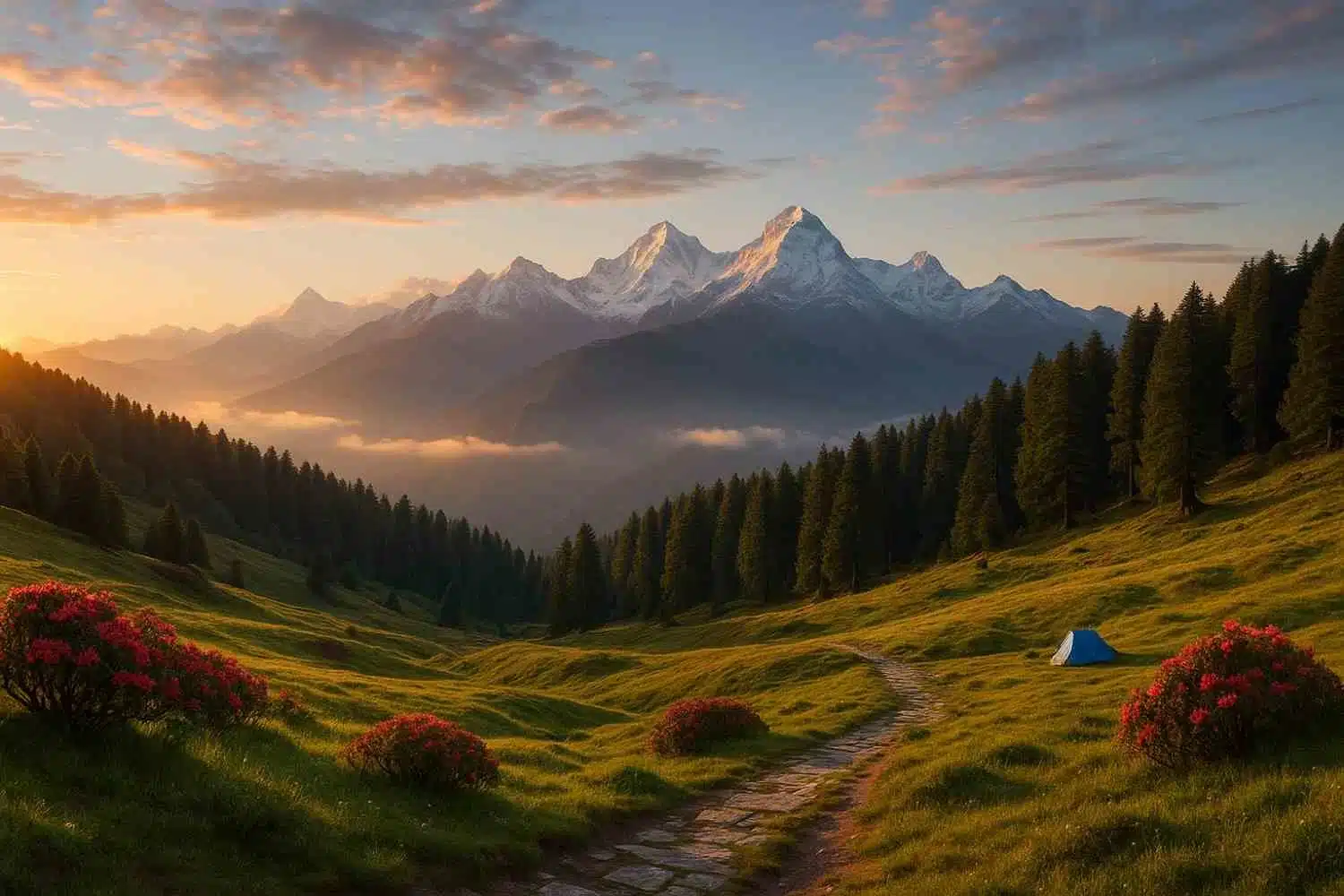Namgyal Monastery is in McLeod Ganj, Dharamshala, Himachal Pradesh. It represents Tibet’s cultural and religious history as the 14th Dalai Lama’s monastery. Tibetan exiles may meditate, study, and pray at this hallowed spot.
As a spiritual and cultural center, Namgyal Monastery has preserved Tibetan Buddhism since its 1959 migration to India. Visitors to this respected monastery feel calm in the Dhauladhar mountains as monks practice and educate. Tibetan tradition promotes peace, wisdom, and compassion at Namgyal Monastery for seekers of spiritual enlightenment.
History and Background of Namgyal Monastery
Sonam Gyatso, the third Dalai Lama, built Namgyal Monastery in 1575. The monastery, formerly Phende Lekshe Ling, was close to the Dalai Lama and protected Tibetan Buddhism, notably Gelugpa.
Tenzin Gyatso, the 14th Dalai Lama, fled to India in 1959 when China annexed Tibet. In Dharamshala, Namgyal Monastery remains the Dalai Lama’s monastery. Since its move, the monastery has been a leader in Tibetan Buddhism preservation and practice for future generations.
Namgyal Monastery Design
Namgyal Monastery blends traditional Tibetan styles with Himalayan splendor to express Tibetan Buddhism’s strong symbolism. Spacious prayer rooms with exquisite murals and Thangka paintings depicting the Buddha and other deities’ lives are throughout the compound.
Meditation chambers, stupas, and monastic homes are carefully created according to Tibetan Buddhist precepts. The monastery’s prayer wheels and Kalachakra Temple, a prominent attraction, demonstrate its spiritual and cultural value. Meditation and introspection are excellent at Namgyal Monastery, which is nestled in the Dhauladhar mountain range.
Architecture and Layout of Namgyal Monastery
Namgyal Monastery is very religious for Tibetan refugees in India. The Gelugpa monastery rigorously teaches Buddhist philosophy, discussion, and rites. Monks worship, meditate, and debate philosophy to preserve centuries-old traditions.
The monastery is vital to Tibetan Buddhist rituals and prayers for global peace, the well-being of all sentient beings, and the spread of compassion and knowledge. The Kalachakra Initiation and others gather thousands of spiritual seekers worldwide
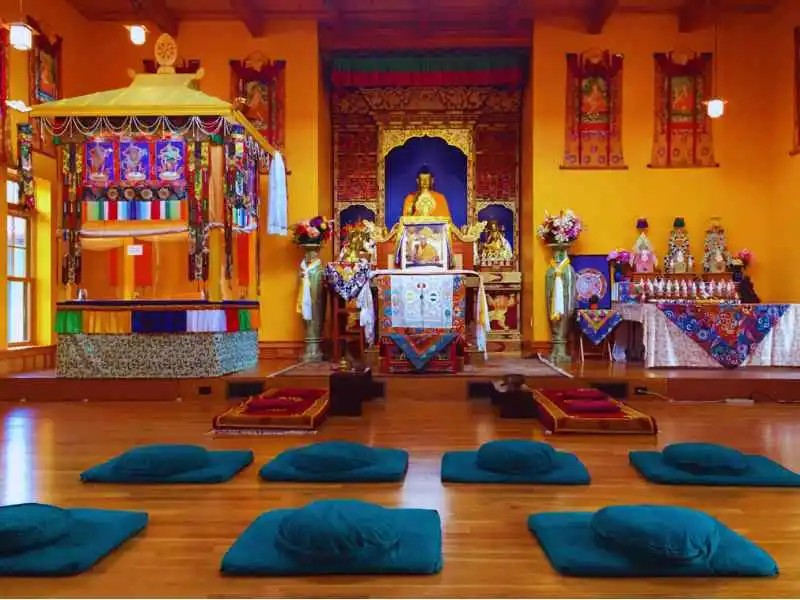
Activities and Monastic Education
The daily regimen of Namgyal Monastery promotes attention and knowledge via spiritual practices. Monastic education at the monastery comprises extensive Buddhist philosophy, meditation, and ceremonial performance studies. Tibetan monastic education emphasizes discussion and literary understanding.
In addition to their scholastic and spiritual endeavors, Namgyal Monastery monks engage in yearly prayer festivals, including Losar, the Tibetan New Year. The exiled Tibetan community needs these celebrations to preserve Tibetan culture and community.
Role in Tibetan Culture and Politics
Namgyal Monastery is vital to Tibetan culture and identity beyond its spiritual purposes. It represents Tibetan autonomy and peace, reflecting the Dalai Lama’s teachings and humanitarian work. The monastery preserves religion, Tibetan language, and art.
The monastery’s worldview promotes cultural understanding and human rights worldwide, reflecting the Dalai Lama’s non-violence and peace. Namgyal Monastery integrates spirituality and politics to benefit Tibetans and promote peace and justice.
Touring Namgyal
Namgyal Monastery is peaceful and enriching. In McLeod Ganj, Dharamshala, the monastery is open year-round. Visit in April–June and September–November for the finest weather. No admission, however, visitors should be quiet and aware to preserve the tranquil setting.
The Kalachakra Temple offers tours, prayer wheels, and quiet meditation. Set against the Himalayas, the monastery’s spiritual aura gives a distinct sense of peace.
How to reach Namgyal Monastery
To reach Namgyal Monastery via air: Dharamshala’s Gaggal Airport is 20 km from McLeod Ganj.
By train: Pathankot, 85 kilometers distant, is the closest railway station to Dharamshala. Taxis or buses are available there.
Delhi (480 km) and Chandigarh (250 kilometers) are well-connected to McLeod Ganj via road. Taxis and buses travel regularly.
Things to Do Near Namgyal Monastery
Visit McLeod Ganj’s other attractions while touring Namgyal Monastery:
Tsuglagkhang Complex: Official Dalai Lama residence
Bhagsu Waterfall: A beautiful waterfall for nature enthusiasts.
Triund Trek: Popular Himalayan hiking with panoramic vistas.
Dal Lake: A tranquil oasis near Dharamshala.
Conclusion
The Namgyal Monastery is a living symbol of Tibetan culture, spirituality, and endurance. The monastery welcomes visitors and spiritual seekers with its peaceful atmosphere, profound spiritual meaning, and dedication to Tibetan traditions. Dharamshala’s Namgyal Monastery will create an impact whether you’re seeking calm or cultural understanding.
Frequently Asked Question (FAQ)
Namgyal Monastery is famous as the personal monastery of the Dalai Lama. It is also a Tibetan Buddhist and cultural center.
Tourists may visit Namgyal Monastery to learn about its spiritual and cultural importance.
It takes years of training and commitment to Buddhist monastic life to become a monk.
Tawang Monastery in Arunachal Pradesh is India’s biggest.
Tsuglagkhang Complex at Namgyal Monastery in McLeod Ganj, Dharamshala houses the Dalai Lama.
